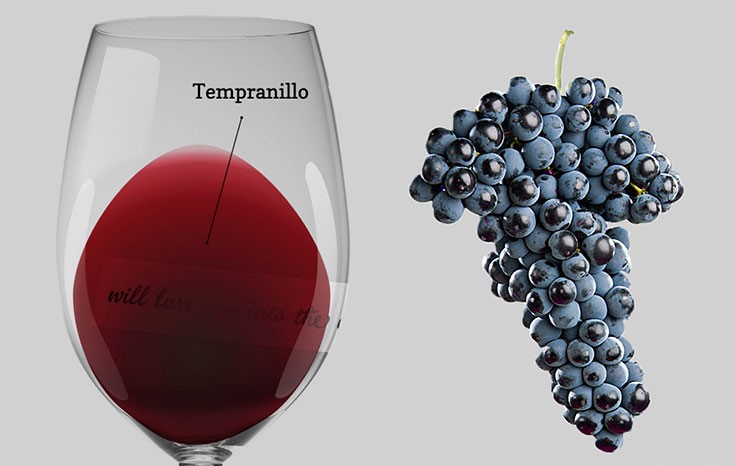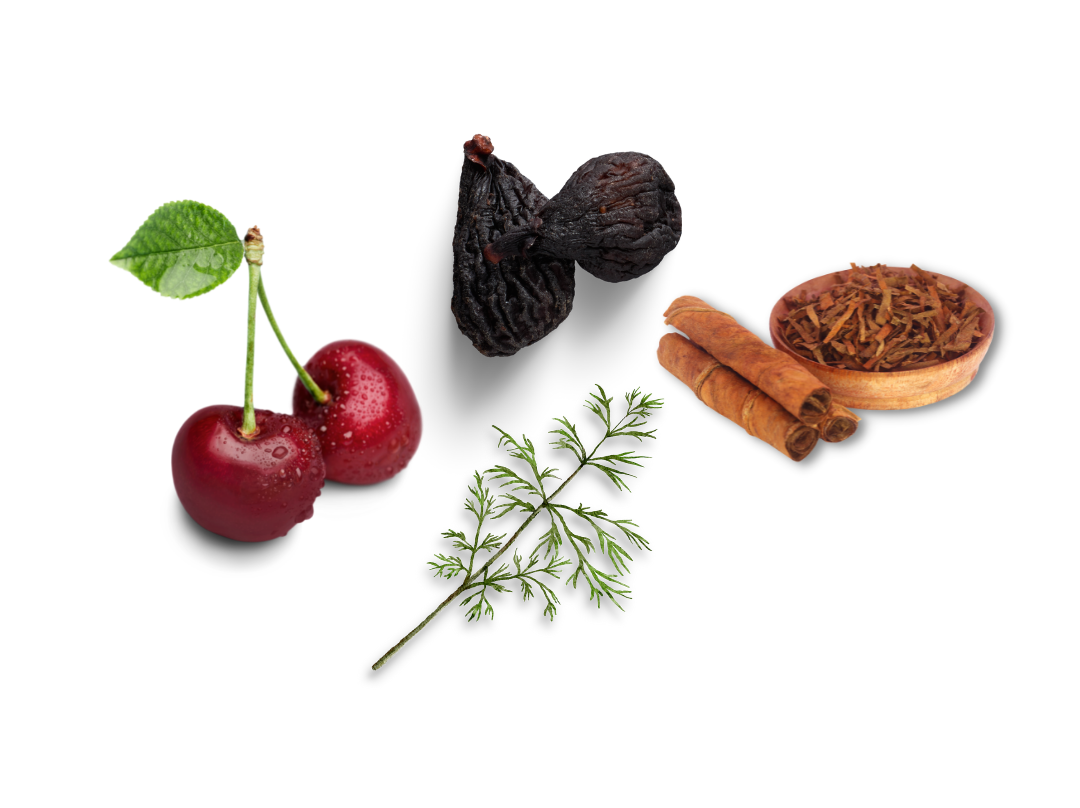
With the structure of Cabernet Sauvignon and meaty nature of Carignan, Tempranillo is an experience to behold. When young, it can be surprisingly fresh and fruity. However, with oak and age, you’ll find more of the dust, tobacco, and leather flavors serious wine fans crave.
Read on for recommendations, flavor profiles, and facts that illustrate the special nature of this wine variety.

It’s the dominant red grape in Rioja, which was Spain’s first region to become a household name.
The name, Tempranillo, comes from the Spanish temprano, meaning “early,” which is fitting as it ripens earlier than other grapes native to Spain.
Tempranillo vines are one of the easiest to identify in the vineyard because of their jagged, deep-lobed leaves.
In love with fall foliage? Tempranillo is one of the few varieties where the leaves turns bright red in the fall. It’s one of the most beautiful sights in the vineyard.

There exists a small, white mutation of Tempranillo called Tempranillo Blanco. Authorized for use in White Rioja, Tempranillo Blanco has a similar growing cycle to red Tempranillo and even faces the same growing challenges. Unlike its red counterpart, Tempranillo Blanco wines are noted for their tropical fruit flavors.
Tempranillo is a very old variety. While the earliest official mention of the variety is from 1807, the general theory is that Tempranillo was introduced to the Iberian Peninsula (Spain and Portugal) by the Phoenicians over 3,000 years ago. A bizarre clue that questions Tempranillo’s Iberian origin is the scattered plantings found in Tuscany and Basilicata, Italy.
Tempranillo is the fourth-most planted variety in the world and is considered one of the nine red noble grapes.
Tempranillo is one of the top varieties blended into Port wine from Portugal, where it’s called Tinta Roriz.
Aged Tempranillo wines are delicious and easy to identify with Spanish wine aging terms.
FLAVORS
Dominant flavors include cherry, dried fig, cedar, tobacco, and dill. Age impacts the flavors of Tempranillo significantly, with Roble and Crianza examples imparting juicy fruit flavors and heat. Reserva and Gran Reserva examples feature deeper, darker fruit notes, dry leaves, and Tempranillo’s signature leather flavors.

PAIRINGS
While famed for pairing with red meat and ham, Tempranillo is a surprisingly versatile food wine that can match well with roasted vegetables, smoke, starch, hearty pastas, and even Mexican food.

CLASSIC REGIONS
Tempranillo is Spain’s top red wine, but it can go by many, many different names depending on the region. Rioja is arguably the easiest to find and recommended when first wading into Spanish wine.
- Rioja and Navarra: Regions that deliver pepper, red cherry, and subtle cinnamon notes with ample structure (a.k.a. tannin).
- Ribera del Duero, Toro, Cigales: (in Castilla-León) These are typically deeper, darker, and more brooding than Rioja with more blackberry fruit flavors and intense, gripping tannins.
- La Mancha and Ribera Del Guadiana: Larger regions in Spain’s central plateau producing some of the best value Tempranillo wines in all of Spain.
Let yourself be surprised by our selection of wines with this type of grape:


